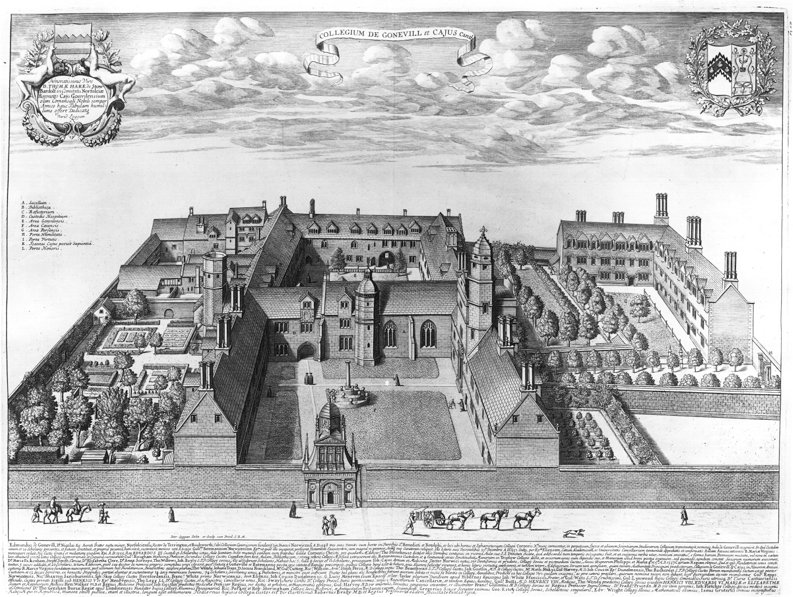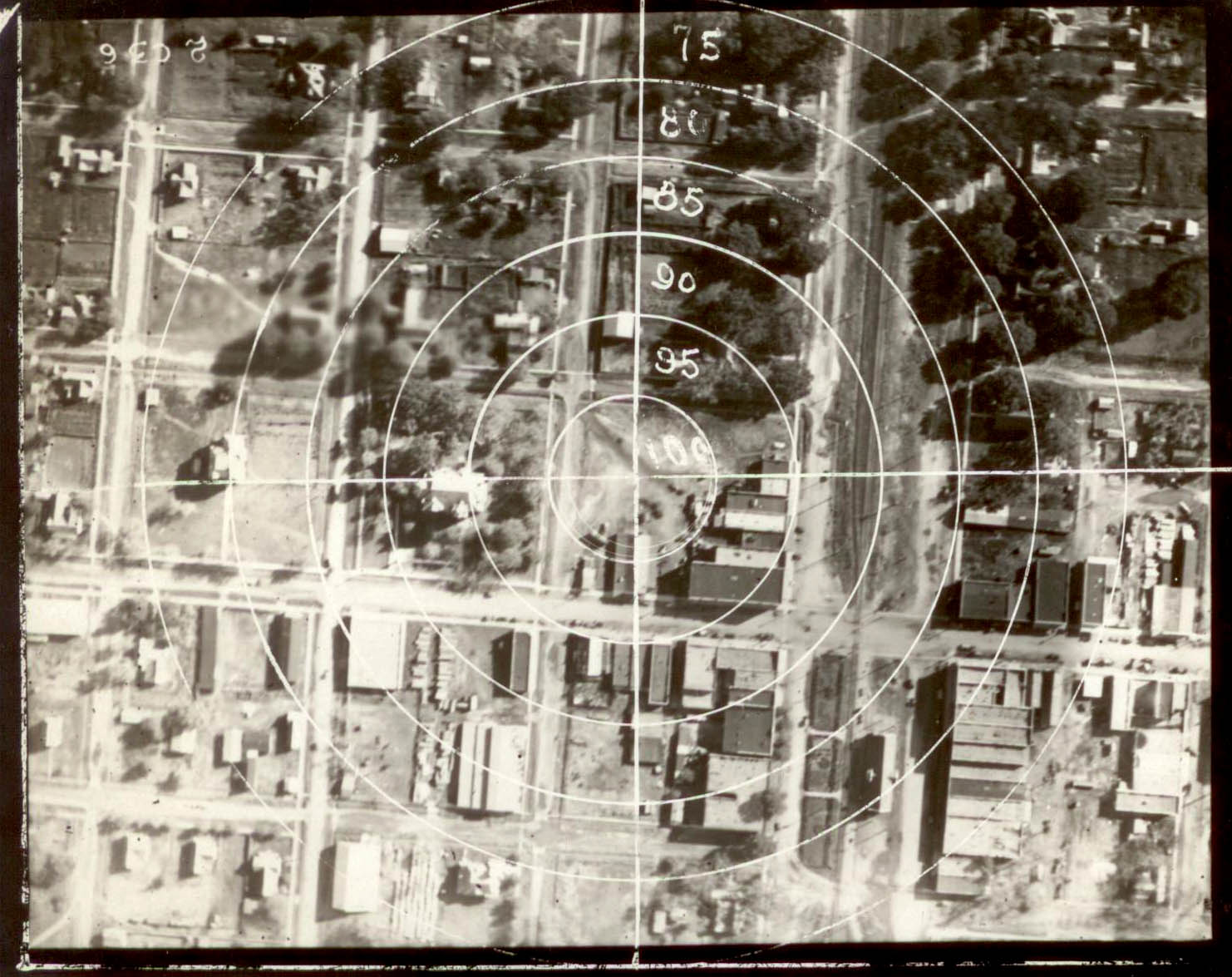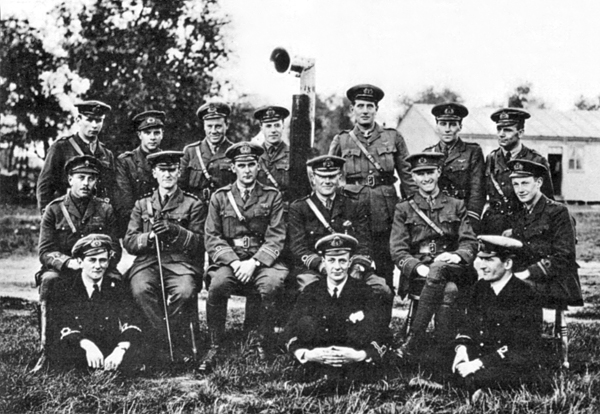|
H. E. Wimperis
Harry Egerton Wimperis Wh.Sch (27 August 1876 – 16 July 1960) was a British aeronautical engineer who acted as the Director of Scientific Research at the UK's Air Ministry prior to World War II. He is best known for his role in setting up the Committee for the Scientific Survey of Air Defence under Henry Tizard, which led directly to the development and introduction of radar in the UK. He is also known for the development of the Drift Sight and Course Setting Bomb Sight during World War I, devices that revolutionised the art of bombing. Biography Wimperis was born on 27 August 1876 to Joseph Price Wimperis, an Australian merchant, and Jemima Samuel in Edmonton, London. He started his studies at Royal College of Science (part of Imperial College) and then moved to Gonville and Caius College, Cambridge as an advanced student in 1898. During this period he became a Whitworth Scholar, wrote a series of engineering books covering internal combustion, road transport a ... [...More Info...] [...Related Items...] OR: [Wikipedia] [Google] [Baidu] |
The Whitworth Society
The Whitworth Society was founded in 1923 by Henry Selby Hele-Shaw, then president of the Institution of Mechanical Engineers. Its purposes are to promote engineering in the United Kingdom, and more specifically to support all Whitworth Scholars, the recipients of a scholarship funded by Joseph Whitworth's scholarship scheme, which started in 1868. A Whitworth Scholar is the result of completing a successful Whitworth Scholarship. Membership of the Society is limited to Whitworth Scholars, Senior Scholars, Fellows, Exhibitioners and Prizemen. The Society is a way for making contact with all successful "Whitworth's" and provides a way for making information contacts and connections from more senior members to recently successful Scholars. The Society also serves as a way to commemorate Joseph Whitworth and acknowledge his contributions to engineering education. Activities Commemorative dinner and annual general meeting The annual dinner and annual general meeting is held on ... [...More Info...] [...Related Items...] OR: [Wikipedia] [Google] [Baidu] |
Gonville And Caius College, Cambridge
Gonville and Caius College, often referred to simply as Caius ( ), is a constituent college of the University of Cambridge in Cambridge, England. Founded in 1348, it is the fourth-oldest of the University of Cambridge's 31 colleges and one of the wealthiest. The college has been attended by many students who have gone on to significant accomplishment, including fifteen Nobel Prize winners, the second-highest of any Oxbridge college after Trinity College, Cambridge. The college has long historical associations with the teaching of medicine, especially due to its prominent alumni in the medical profession. It also has globally-recognized and prestigious academic programmes in law, economics, English literature, and history. Famous Gonville and Caius alumni include physicians John Caius (who gave the college the caduceus in its insignia) and William Harvey. Other alumni in the sciences include Francis Crick (joint discoverer of the structure of DNA with James Watson), James Ch ... [...More Info...] [...Related Items...] OR: [Wikipedia] [Google] [Baidu] |
Albert Percival Rowe
Albert Percival Rowe, CBE (23 March 1898 – 25 May 1976), often known as Jimmy Rowe or A. P. Rowe, was a radar pioneer and university vice-chancellor. A British physicist and senior research administrator, he played a major role in the development of radar before and during World War II. Early years Rowe was born in Launceston, Cornwall, and after attending the Portsmouth Naval Dockyard School, he studied physics at the Royal College of Science, University of London, graduating with a first-class honours in 1921, and postgraduate diploma in air navigation in 1922. On 18 June 1932 at Beckenham, Kent, he married Mary Gordon Mathews, a solicitor. Air defence and radar In the Air Ministry he read up everything he could find on the art of air defence, and became alarmed. Working at that time for Harry Wimperis, he wrote a memo to him that concluded that "we were likely to lose the war if it starts within the next ten years". Wimperis took the report seriously, and in 1934 started th ... [...More Info...] [...Related Items...] OR: [Wikipedia] [Google] [Baidu] |
Royal Air Force
The Royal Air Force (RAF) is the United Kingdom's air and space force. It was formed towards the end of the First World War on 1 April 1918, becoming the first independent air force in the world, by regrouping the Royal Flying Corps (RFC) and the Royal Naval Air Service (RNAS). Following the Allied victory over the Central Powers in 1918, the RAF emerged as the largest air force in the world at the time. Since its formation, the RAF has taken a significant role in British military history. In particular, it played a large part in the Second World War where it fought its most famous campaign, the Battle of Britain. The RAF's mission is to support the objectives of the British Ministry of Defence (MOD), which are to "provide the capabilities needed to ensure the security and defence of the United Kingdom and overseas territories, including against terrorism; to support the Government's foreign policy objectives particularly in promoting international peace and security". The R ... [...More Info...] [...Related Items...] OR: [Wikipedia] [Google] [Baidu] |
Wind Speed
In meteorology, wind speed, or wind flow speed, is a fundamental atmospheric quantity caused by air moving from high to low pressure, usually due to changes in temperature. Wind speed is now commonly measured with an anemometer. Wind speed affects weather forecasting, aviation and maritime operations, construction projects, growth and metabolism rate of many plant species, and has countless other implications. Note that wind direction is usually almost parallel to isobars (and not perpendicular, as one might expect), due to Earth's rotation. Units Metres per second (m/s) is the SI unit for velocity and the unit recommended by the World Meteorological Organization for reporting wind speeds, and is amongst others used in weather forecasts in the Nordic countries. Since 2010 the International Civil Aviation Organization (ICAO) also recommends meters per second for reporting wind speed when approaching runways, replacing their former recommendation of using kilometres per h ... [...More Info...] [...Related Items...] OR: [Wikipedia] [Google] [Baidu] |
Stopwatch
A stopwatch is a timepiece designed to measure the amount of time that elapses between its activation and deactivation. A large digital version of a stopwatch designed for viewing at a distance, as in a sports stadium, is called a stop clock. In manual timing, the clock is started and stopped by a person pressing a button. In fully automatic time, both starting and stopping are triggered automatically, by sensors. The timing functions are traditionally controlled by two buttons on the case. Pressing the top button starts the timer running, and pressing the button a second time stops it, leaving the elapsed time displayed. A press of the second button then resets the stopwatch to zero. The second button is also used to record ''split times'' or ''lap times''. When the split time button is pressed while the watch is running it allows the elapsed time to that point to be read, but the watch mechanism continues running to record total elapsed time. Pressing the split button a s ... [...More Info...] [...Related Items...] OR: [Wikipedia] [Google] [Baidu] |
Bombsight
A bombsight is a device used by military aircraft to drop bombs accurately. Bombsights, a feature of combat aircraft since World War I, were first found on purpose-designed bomber aircraft and then moved to fighter-bombers and modern tactical aircraft as those aircraft took up the brunt of the bombing role. A bombsight has to estimate the path the bomb will take after release from the aircraft. The two primary forces during its fall are gravity and air drag, which make the path of the bomb through the air roughly parabolic. There are additional factors such as changes in air density and wind that may be considered, but they are concerns only for bombs that spend a significant portion of a minute falling through the air. Those effects can be minimized by reducing the fall time by low-level bombing or by increasing the speed of the bombs. Those effects are combined in the dive bomber. However, low-level bombing also increases the danger to the bomber from ground-based defence ... [...More Info...] [...Related Items...] OR: [Wikipedia] [Google] [Baidu] |
Royal Navy Air Service
The Royal Naval Air Service (RNAS) was the air arm of the Royal Navy, under the direction of the Admiralty's Air Department, and existed formally from 1 July 1914 to 1 April 1918, when it was merged with the British Army's Royal Flying Corps to form the Royal Air Force (RAF), the world's first independent air force. It was replaced by the Fleet Air Arm, initially consisting of those RAF units that normally operated from ships, but emerging as a separate unit similar to the original RNAS by the time of World War 2. Background In 1908, the British Government recognised the military potential of aircraft. The Prime Minister of the United Kingdom, Prime Minister, H. H. Asquith, approved the formation of an "Advisory Committee for Aeronautics" and an "Aerial Sub-Committee of the Committee of Imperial Defence". Both committees were composed of politicians, British Army, army officers and Royal Navy officers. On 21 July 1908 Captain Reginald Bacon, who was a member of the Aerial Na ... [...More Info...] [...Related Items...] OR: [Wikipedia] [Google] [Baidu] |
Royal Naval Volunteer Reserve
Royal may refer to: People * Royal (name), a list of people with either the surname or given name * A member of a royal family Places United States * Royal, Arkansas, an unincorporated community * Royal, Illinois, a village * Royal, Iowa, a city * Royal, Missouri, an unincorporated community * Royal, Nebraska, a village * Royal, Franklin County, North Carolina, an unincorporated area * Royal, Utah, a ghost town * Royal, West Virginia, an unincorporated community * Royal Gorge, on the Arkansas River in Colorado * Royal Township (other) Elsewhere * Mount Royal, a hill in Montreal, Canada * Royal Canal, Dublin, Ireland * Royal National Park, New South Wales, Australia Arts, entertainment, and media * ''Royal'' (Jesse Royal album), a 2021 reggae album * ''The Royal'', a British medical drama television series * ''The Royal Magazine'', a monthly British literary magazine published between 1898 and 1939 * ''Royal'' (Indian magazine), a men's lifestyle bimonthly * Royal Te ... [...More Info...] [...Related Items...] OR: [Wikipedia] [Google] [Baidu] |
Lieutenant (navy)
LieutenantThe pronunciation of ''lieutenant'' is generally split between , , generally in the United Kingdom, Ireland, and Commonwealth countries, and , , generally associated with the United States. See lieutenant. (abbreviated Lt, LT (U.S.), LT(USN), Lieut and LEUT, depending on nation) is a commissioned officer rank in many English-speaking nations' navies and coast guards. It is typically the most senior of junior officer ranks. In most navies, the rank's insignia may consist of two medium gold braid stripes, the uppermost stripe featuring an executive curl in many Commonwealth of Nations; or three stripes of equal or unequal width. The now immediately senior rank of lieutenant commander was formerly a senior naval lieutenant rank. Many navies also use a subordinate rank of sub-lieutenant. The appointment of "first lieutenant" in many navies is held by a senior lieutenant. This naval lieutenant ranks higher than an army lieutenants; within NATO countries the naval rank ... [...More Info...] [...Related Items...] OR: [Wikipedia] [Google] [Baidu] |
Turn Coordinator
In aviation, the turn and slip indicator (T/S, a.k.a. turn and bank indicator) and the turn coordinator (TC) variant are essentially two aircraft flight instruments in one device. One indicates the rate of turn, or the rate of change in the aircraft's heading; the other part indicates whether the aircraft is in coordinated flight, showing the slip or skid of the turn. The slip indicator is actually an inclinometer that at rest displays the angle of the aircraft's transverse axis with respect to horizontal, and in motion displays this angle as modified by the acceleration of the aircraft. The most commonly used units are degrees per second (deg/s) or minutes per turn (min/tr). Name The turn and slip indicator can be referred to as the turn and bank indicator, although the instrument does not respond directly to bank angle. Neither does the turn coordinator, but it does respond to roll rate, which enables it to respond more quickly to the start of a turn. Operation Turn indicato ... [...More Info...] [...Related Items...] OR: [Wikipedia] [Google] [Baidu] |
Elliott Brothers (computer Company)
Elliott Brothers (London) Ltd was an early computer company of the 1950s–60s in the United Kingdom. It traced its descent from a firm of instrument makers founded by William Elliott (1780 or 1781-1853) in London around 1804. The research laboratories were originally set up in 1946 at Borehamwood and the first Elliott 152 computer appeared in 1950. In its day the company was very influential. The computer scientist Bobby Hersom was an employee from 1953-1954, and Sir Tony Hoare was an employee there from August 1960 to 1968. He wrote an ALGOL 60 compiler for the Elliott 803. He also worked on an operating system for the new Elliott 503 Mark II computer. The founder of the UK's first software house, Dina St Johnston, had her first programming job there from 1953–1958, and John Lansdown pioneered the use of computers as an aid to planning on an Elliott 803 computer in 1963. In 1966 the company established an integrated circuit design and manufacturing facility in Gle ... [...More Info...] [...Related Items...] OR: [Wikipedia] [Google] [Baidu] |






